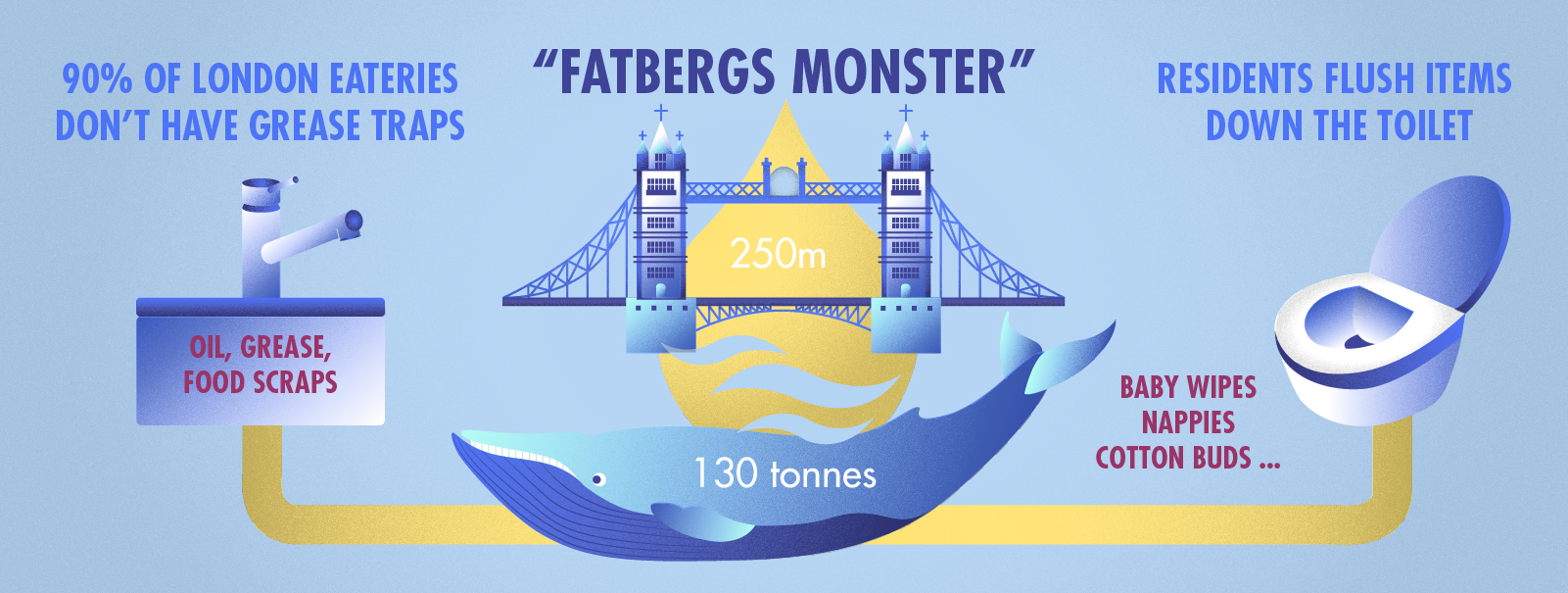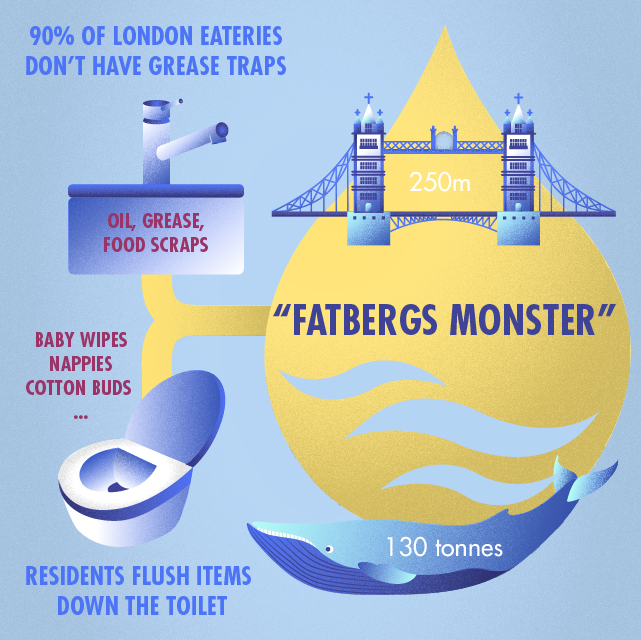Staggering, London fatbergs!
90% of London restaurants are contributing to the problem


- According to a routine inspection of Thames Water, 130-tonne of fatbergs, nearly as heavy as a blue whale and weighed as much as 19 African elephants, are found under Whitechapel Road in east London.
- Grease, oil, food scraps and other unflushable items from restaurants are accumulated and congealed inside pipes and drains since the majority of restaurants and takeaways in London are failed to install grease traps. As a result, blockages of fatbergs are formed. In addition, gunk from dirty plates, pots and pans are other sources of fatberg.
- Workers equipped with high-powered jets and shovels had been toiling seven days a week disintegrating the blockages for a month to repair the damage they caused to the Victorian sewer system. Stephen Pattenden, sewer network manager, said £1 million had been spent on unblocking sewers. He also said restaurants which are unable to install proper systems, such as grease traps and other measures, will face prosecution if they fail to comply to make required changes.
- One of the solution is that well maintained grease traps are enough to prevent kitchen waste from entering sewers. Besides, converting the fatberg into the fuel is a better solution than removing the fatberg from the pipes and sending it to landfill, or breaking it down and putting it back through the sewage treatment process. The fatberg which could be changed into about 10,000 litres of biodiesel is enough to power 350 double-decker Routemaster buses for a day. On the other hand, although a lot of wet wipes brands claim their products to be flushable, they do not break down nearly as much as toilet paper and play a major part in creating fatbergs. Alex Saunders, Thames Water waste network manager, encourages to avoid flushing baby wipes, nappies, cotton buds and sanitary products down the toilet.
https://www.watpure.com/index.php